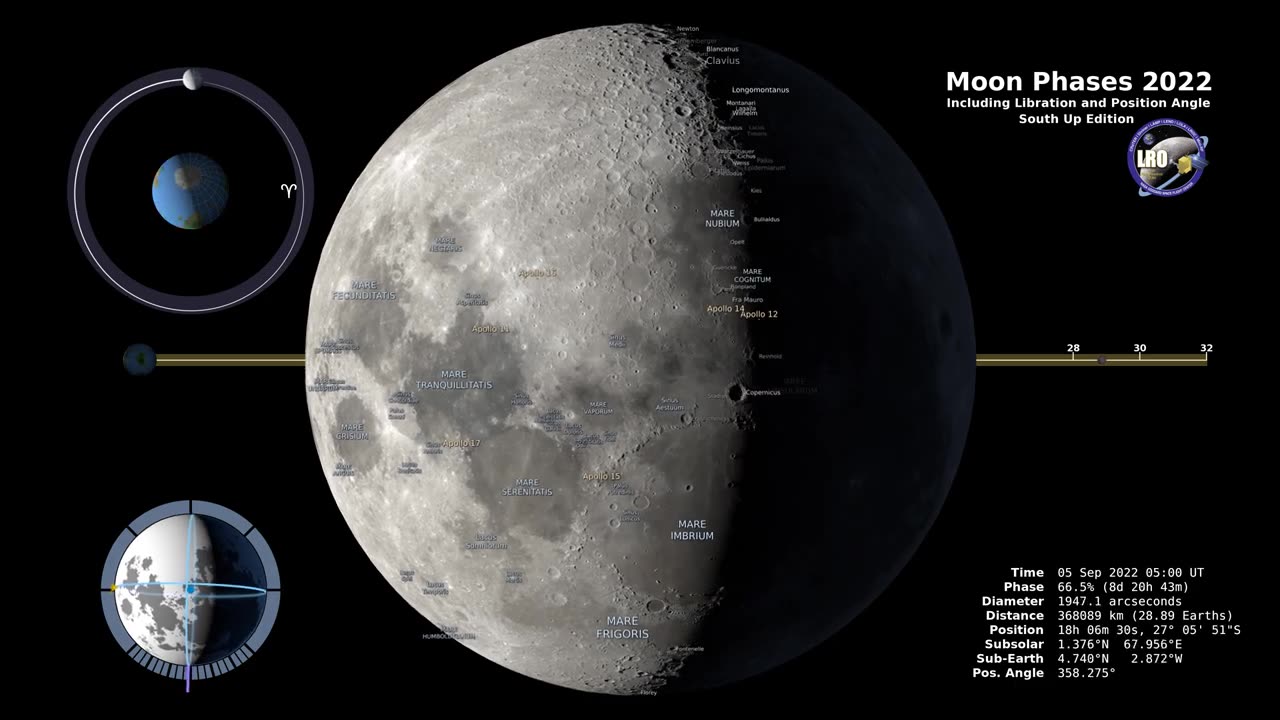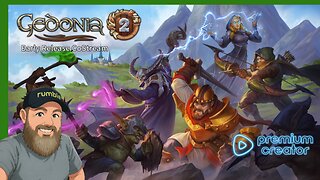Premium Only Content

MOON PHASE
1.New Moon: During this phase, the moon is located between the Earth and the Sun. The side of the moon facing Earth is not illuminated by the Sun, making it appear completely dark or invisible from our perspective. It's often difficult to see a new moon because it's in the same direction as the Sun in the sky.
2.Waxing Crescent: As the moon moves in its orbit, a small crescent of illumination becomes visible on its right side (in the Northern Hemisphere) over the western horizon after sunset. This phase is known as the waxing crescent. The illuminated portion gradually grows larger each night.
3.First Quarter (Half Moon): About a week after the new moon, the moon has completed roughly one quarter of its orbit around Earth. This results in the right half of the moon being illuminated, while the left half remains in darkness. This phase is often referred to as the first quarter or half moon.
Waxing Gibbous: Following the first quarter, the moon continues to wax, meaning it becomes increasingly illuminated each night. The waxing gibbous phase occurs as the illuminated portion grows larger, but it's not yet a full moon. The moon's brightness increases night by night.
Full Moon: About two weeks after the new moon, the Earth is positioned between the Sun and the moon. This results in the entire side of the moon facing Earth being illuminated by the Sun. The moon appears as a full, bright circle in the sky, and it's visible throughout the night, rising around sunset and setting around sunrise.
4.Waning Gibbous: After the full moon, the moon begins to wane, meaning its illuminated portion starts to decrease. The waning gibbous phase occurs as the illuminated part becomes smaller, but it's not yet a half moon.
5.Last Quarter (Half Moon): About three weeks after the new moon, the moon has completed roughly three quarters of its orbit. This leads to the left half of the moon being illuminated, while the right half remains dark. This phase is often referred to as the last quarter or half moon.
Waning Crescent: As the moon continues its orbit, the illuminated portion becomes smaller and takes on a crescent shape again, this time on the left side (in the Northern Hemisphere) over the eastern horizon before sunrise. This phase is known as the waning crescent.
6.The moon's phases repeat in a cyclical pattern, with each cycle taking approximately 29.5 days to complete. This period is known as a lunar month or synodic month. The changing appearance of the moon's phases is a result of its position relative to the Earth and the Sun, as well as the angle at which sunlight reaches its surface.
-
 LIVE
LIVE
Anthony Rogers
1 day agoAnthony Rogers Show - 24/7 Stream
83 watching -
 2:11:55
2:11:55
Total Horse Channel
13 hours ago2025 CMSA Extravaganza | Mounted Shooting
20.9K1 -
 LIVE
LIVE
VapinGamers
3 hours ago $0.08 earnedGedonia 2 - Early Release Preview and Co-Stream! - !game #Sponsored
191 watching -
 1:32:39
1:32:39
Glenn Greenwald
9 hours agoWeek in Review: Douglas Murray VS Dave Smith Debate, Tariffs, and More with Glenn Greenwald, Lee Fang, & Michael Tracey | SYSTEM UPDATE #438
110K41 -
 LIVE
LIVE
EnDuEnDo
2 hours ago🚨Vairety Stream 🎮 Push to 500 Followers 🚀 Chill Vibes 😎
68 watching -
 4:25:53
4:25:53
Nerdrotic
9 hours ago $4.10 earnedMarvel Is SCREWED | Daredevil Afterbirth | G20 is ABSOLUTE Cinema - Friday Night Tights 349 w MauLer
126K26 -
 56:03
56:03
BonginoReport
8 hours agoICE Boss Wants Deportations To Run like Amazon Prime - Nightly Scroll w/Hayley Caronia (Ep.25)
128K73 -
 45:12
45:12
Sarah Westall
5 hours ago“Most Important Story of the Decade” Globalists Move to Fund World Gov w/ Alex Newman & Sam Anthony
51.9K12 -
 16:23
16:23
China Uncensored
6 hours agoChina STRIKES BACK Against Trump Tariffs
31.2K5 -
 13:52
13:52
Tundra Tactical
6 hours ago $0.14 earnedDOJ's 2A Task Force: Too Little Too Late?
24.4K3